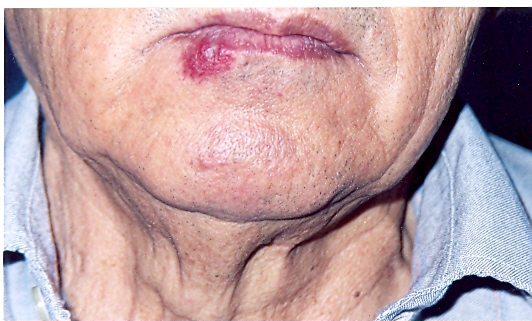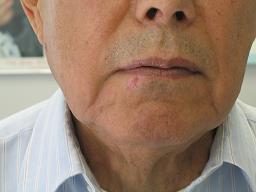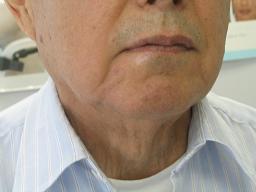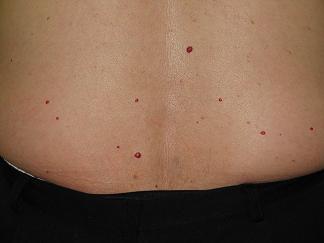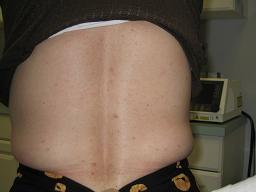|
|
||||||||||||||||
| A vascular lesion is formed by abnormally large or numerous small vessels located directly under the surface of the skin. These vessels may be visible through the skin (Spider Angiomas) or result in a red appearance of the skin. Vascular lasers target the red blood cells which in turn heat and damage the vessels. At the Vein Laser Center we have combined Pulse Dye Lasers with variable long pulse Nd-Yag laser to treat various vascular lesions with great success. | ||||||||||||||||
Hemangiomas Hemangiomas are an abnormal growth or proliferation of blood vessels. Hemangiomas usually not present at birth, appear and proliferate rabidly at some time after birth. Usually hemangiomas shrink slowly over several years and eventually disappear, or involute. Hemangiomas occur in about 2-7% of newborns, more commonly in females and multiple births. They present as whitish, flat patches surrounded by dilated blood vessels, but enlarge over the first year of life. Most hemangiomas will begin to regress by age 4, eventually leaving a small, barely visible patch of slightly irregular skin, although incomplete regression is common. There are two types of hemangiomas:
In a very few cases, these lesions may enlarge rapidly, become irritated and bleed, and even affect vital structures. Occasionally they may be associated with similar lesions elsewhere in the body, especially the larynx and trachea. Most of these lesions require no treatment-more aggressive growths can be treated with oral or injected cortisone, Interferon and lasers.
|
||||||||||||||||
|
After Two Treatments with Nd-YAG Laser
|
||||||||||||||||
Cherry Hemangioma (angioma, senile angiokeratoma) Cherry angiomas are the most common of all vascular malformations. They are smooth, well circumscribed, red-to-purple lesions. They occur mostly on the trunk in persons over 30. Their exact cause is unknown, but they can be successfully treated with Pulse Dye Lasers (PDL). Occasionally, they may clinically resemble nodular melanoma.
|
||||||||||||||||
Spider Angiomas These are small red lesions, has a central nidus surrounded by “legs” / “Telangiectasias”. These lesions respond favorably to laser therapy. |
||||||||||||||||
Vascular Malformation, Port Wine Stain (PWS), Nevus Flammeus These are growths always present at birth that remain unchanged. They can be any size and they grow as the child grows. Unfortunately, they never go away by themselves. They last a lifetime. They are flat, pale pink in color at infancy and gradually darken to a red shade during adulthood. Mostly found on face, neck, arms and legs. About 5% of these lesions are associated with glaucoma, metal retardation, and or seizures due to involvement of the vessels of the eye and central nervous system (Sturge-Weber Syndrome) The ideal treatment should begin as early as possible. In infancy, the birthmark is smaller and the blood vessels are less ecstatic. Treatment at this time also spares the patient emotional and psychological trauma. With maturity, the lesion tends to become nodular with larger and deeper blood vessels. Treatment required becomes more extensive. Lesions on extremities respond less dramatically than facial lesions. Optimal treatment is with the Pulsed Dye Laser (PDL) beginning in infancy. Multiple treatments are necessary, and complete removal of the growth is not possible in every case. |
||||||||||||||||
Rosacea Red facial lesions around the nose and cheeks causing a sunburn look. It is characterized by:
|
||||||||||||||||
Venous Lakes Venous Lakes are deep purple colored lesions most common on sun-exposed areas in older individuals, especially on the vermilion of the lower lip and on the ears. These smooth, easily compressible lesions are composed of dilated or "varicose" vein. Because of their deep purple, almost black color, they may be mistaken by patients for melanoma. Bleeding following trauma or irritation may occur. Venous lakes are easily and successfully treated by PDL and long pulse Nd-Yag laser lasers at our centers. One or two treatments are required to clear these lesions.
|
||||||||||||||||
| Poikiloderma Poikiloderma of Civatte refers to redness associated with a mottled pigmentation seen on the sides of the neck, more commonly in women. The term poikiloderma refers to the combination of skin thinning, dilatation of fine blood vessels (telangiectasia), and pigmentary changes (both hypopigmentation and hyperpigmentation). The causes are unknown, but many factors have been implicated.
Treatment: At the Vein Laser Center, Pulsed dye laser (PDL) treatment has been found the best way to reduce the telangiectasia and pigmentation. Two to three treatments are required to clear this condition. In addition, we recommend:
|
||||||||||||||||
|
PDL laser is not available at this time at Vein Laser Center |
||||||||||||||||
|
Benign Cutaneous Lesions Having a Vascular Component
|
||||||||||||||||
|
||||||||||||||||
|
